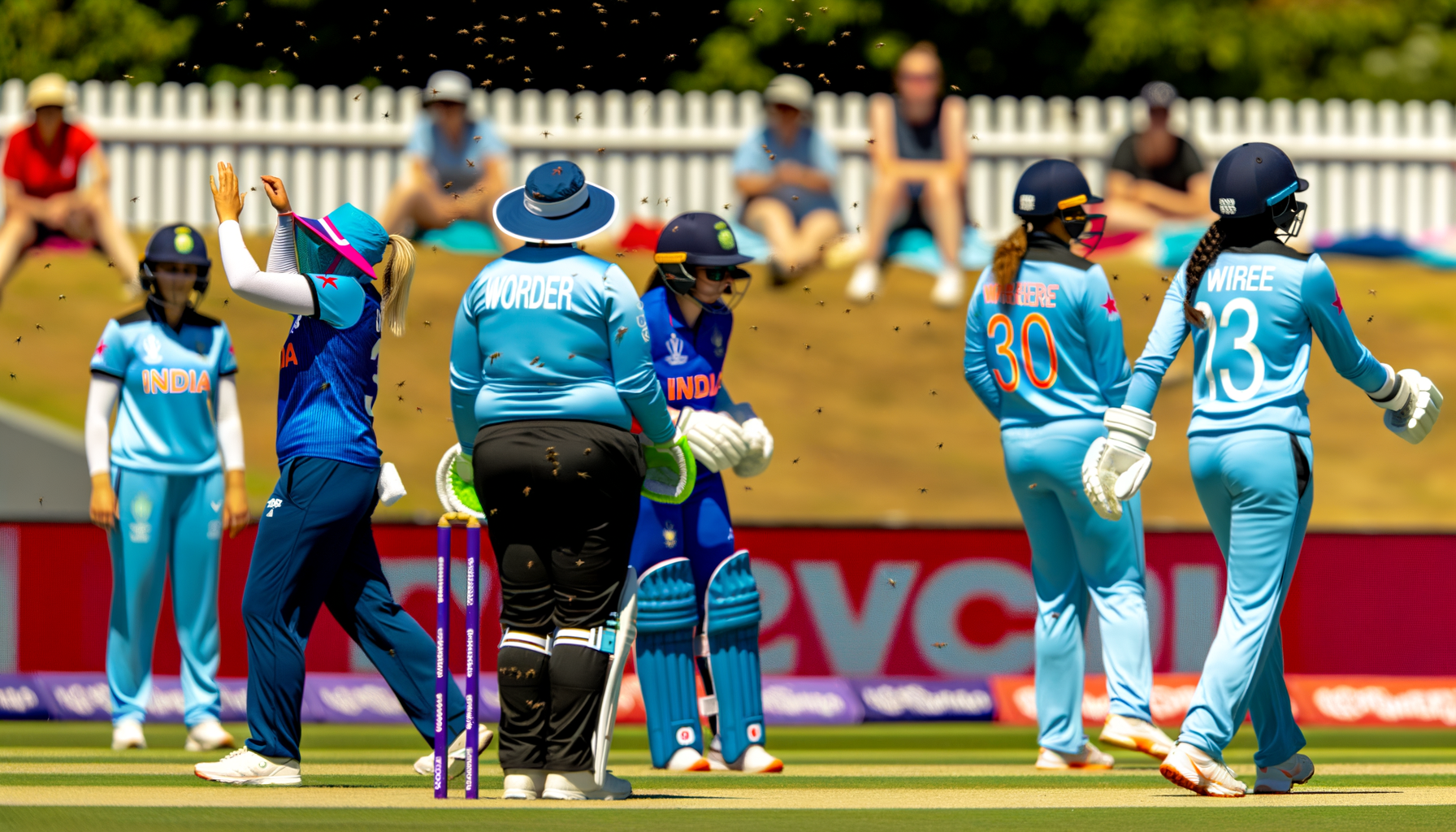When Flies Halt Play: The Bugbuster Moment In Women’s Cricket
Discover how a swarm of flies halted the ICC Women’s Cricket World Cup match between India and Pakistan, highlighting unexpected challenges in sport.

By Editorial
The unexpected interruption in women's cricket
In a recent ICC Women’s Cricket World Cup clash between India and Pakistan in Colombo, an unusual event stole the spotlight. A large swarm of flies descended onto the field, causing a pause in play as players struggled to focus. This incident, though bizarre, sheds light on the unpredictable elements that athletes often face in outdoor sports.
Why do environmental factors like insects impact cricket matches?
Cricket, like many outdoor sports, is vulnerable to environmental disturbances. Flies, midges, or even sudden weather changes can distract players, affecting concentration and performance. In this case, the sheer number of flies made it impossible to continue safely and fairly. Such interruptions, while rare, remind us of the delicate balance between nature and sport.
The role of concentration in high-stakes matches
Players at this level require unwavering focus, especially during intense games like India vs Pakistan, where national pride and tournament progression are at stake. Distractions can lead to mistakes, impacting outcomes and player safety. The fly swarm forced officials to halt the game, preserving the integrity of the competition.
The 'Bugbuster' intervention: a novel solution
To tackle the problem, ground staff employed what was jokingly called the 'Bugbuster' — measures to clear the flies and restore order on the pitch. This included physical removal and possibly insect deterrents. The swift response ensured the match could resume promptly, minimising disruption.
Lessons from the disruption for cricket organisers
This incident highlights the need for effective contingency plans against environmental factors. Groundskeepers and match officials might consider:
- Enhanced pest control measures before and during matches.
- Use of natural repellents that don’t affect players or pitch conditions.
- Scheduling games to avoid peak insect activity times.
Such proactive steps can help maintain smooth play and player comfort.
Historical context: environmental interruptions in cricket
While fly swarms are uncommon, cricket has seen various environmental challenges. Rain delays are typical, but gusty winds, extreme heat, and unexpected wildlife appearances have also caused interruptions. For example, during the Ashes series, sudden storms have forced delays, testing players’ adaptability.
Similar to these, the fly swarm incident reminds fans and officials alike that cricket is as much a battle with nature as it is between teams. For more on cricket’s evolving challenges, see Australia’s cricket dominance and the upcoming Ashes battle.
Impact on players and spectators
Players faced immediate discomfort, with flies distracting batsmen and fielders alike. Spectators, meanwhile, experienced an unusual pause in entertainment but were treated to a memorable moment that added a unique story to the tournament’s narrative.
Such events can sometimes unify fans and players through shared humour and resilience, underscoring sport’s unpredictability.
Broader implications for women’s cricket
This match interruption occurred during a high-profile women’s cricket event, emphasising the increasing visibility and media coverage of the women’s game. As the sport grows, so does its exposure to diverse challenges, including those from nature.
Supporting women’s cricket involves investing in better infrastructure and matchday management, ensuring players compete in optimal conditions. For insight into the sport’s rise and broadcast expansions, check out Sky Sports secures historic WSL broadcast deal from 2025, which illustrates media commitment to women’s sports.
What can fans learn from the bugbuster moment?
For fans, the incident is a reminder of the unpredictable nature of sports. It also highlights the behind-the-scenes work that goes into ensuring matches proceed fairly and safely. Next time you watch a game, consider the many factors—both human and environmental—that influence what unfolds on the pitch.
Conclusion: embracing the unpredictable in sport
The fly swarm disruption during the ICC Women’s World Cup match between India and Pakistan was more than just a quirky anecdote. It reflected the complex interplay between athletes, officials, and the environment. By learning from such incidents, cricket can continue evolving, ensuring players perform at their best despite nature’s surprises.
For ongoing sports updates and expert insights, visit the Posts section on SportsScoop.
Related topics
Editorial
Sports expert at SportsScoop
Specialist in sports analysis and journalism
Related articles
Want to read more?
Explore our comprehensive collection of sports articles and analysis, or contact us for more information.



